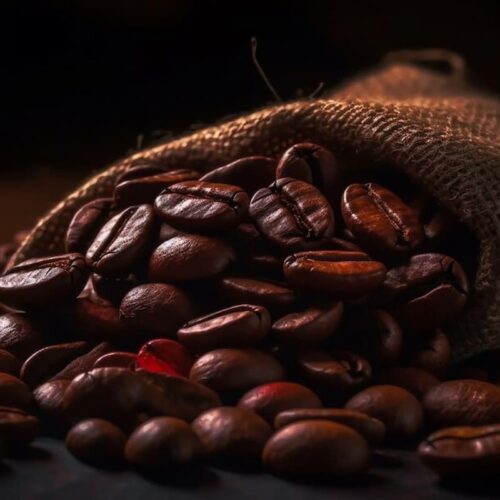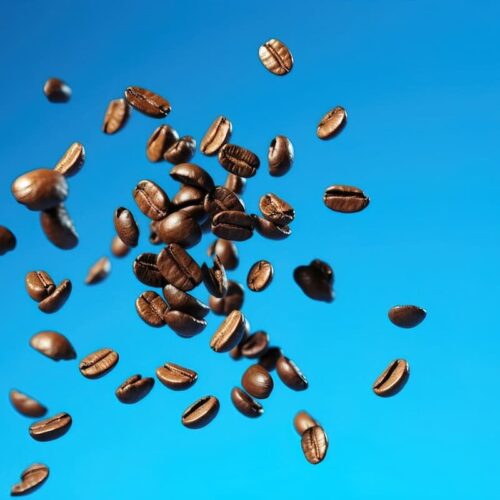Rare and exotic coffee beans are highly sought after for their unique flavors, aromas, and distinct growing conditions.
These beans often come from remote regions, high-altitude farms, and wild-growing environments, making them significantly different from commercially available coffee.
To truly appreciate the complexity of these beans, it is essential to choose the right brewing method.
Different brewing techniques can either enhance or mute the flavors that make rare coffee beans so special.
In this article, we will explore the best brewing methods that allow you to experience the full potential of these exceptional coffees.
Why Brewing Methods Matter for Rare Coffee Beans
The way coffee is brewed directly impacts the final taste, body, and aroma of the drink.
Some methods bring out bright acidity and delicate floral notes, while others emphasize deep chocolatey undertones and rich mouthfeel.
Rare coffee beans often have complex flavor layers that require careful extraction to be fully appreciated.
Choosing the wrong method can result in an unbalanced cup that fails to showcase the bean’s potential.
Brewing also involves multiple factors, including grind size, water temperature, brewing time, and filtration.
Understanding these elements ensures that each cup of coffee reflects the quality and uniqueness of the beans.
Pour-Over: Precision for Clarity and Complexity
Pour-over brewing is one of the most effective ways to extract the intricate flavors of rare coffee beans.
It allows for precise control over the brewing variables, ensuring a clean and well-balanced cup.
The most commonly used pour-over devices include the Hario V60, Chemex, and Kalita Wave.
The thin paper filters used in pour-over methods help produce a bright and crisp flavor, making them ideal for beans with floral and fruity notes.
To achieve the best results, it is important to use freshly ground coffee with a medium-fine grind.
Water should be poured in a slow, circular motion to ensure even extraction.
The final cup often has a light to medium body with high clarity, making it perfect for showcasing Ethiopian, Kenyan, and Panamanian Geisha beans.
French Press: A Full-Bodied Experience
The French press is a classic immersion brewing method that highlights the richness and body of coffee.
Unlike pour-over, which filters out coffee oils, the French press allows more natural oils and fine particles to remain in the cup.
This results in a heavier mouthfeel and a more robust flavor profile.
Rare beans with chocolate, nutty, or caramel notes tend to shine when brewed with this method.
To prepare coffee using a French press, coarse-ground coffee is steeped in hot water for about four minutes before being separated by pressing down a plunger.
The coffee retains its natural sweetness and complexity, making it a great choice for beans from Brazil, Yemen, and Sumatra.
AeroPress: Versatility and Flavor Control
The AeroPress is a versatile brewing device that allows for multiple brewing techniques.
It combines immersion, pressure, and filtration, giving coffee lovers the ability to experiment with different flavors.
One of the advantages of the AeroPress is its ability to extract both clarity and depth from rare coffee beans.
Adjusting variables like brew time, water temperature, and pressure allows for customized extractions.
The AeroPress is particularly well-suited for beans with complex acidity and subtle sweetness.
It works exceptionally well with washed-process coffees that have citrus, berry, and floral notes.
Whether using the standard method or the inverted method, the AeroPress delivers a well-balanced cup with great versatility.
Espresso: Intensity and Concentration
Espresso brewing is a high-pressure method that extracts coffee in a short amount of time.
This process intensifies the coffee’s flavors, creating a bold and concentrated shot.
Rare beans that have dense, syrupy characteristics perform well under espresso extraction.
Geisha and anaerobic-processed coffees can develop remarkable complexity when brewed as espresso.
To achieve the best results, an espresso machine with precise temperature control and pressure settings is recommended.
The right grind size and proper tamping technique are essential for even extraction.
Espresso brings out layers of flavor that might be less pronounced in other brewing methods, making it a great choice for exotic beans.
Cold Brew: A Smooth and Refreshing Alternative
Cold brew is a unique method that involves steeping coffee in cold water for an extended period.
This slow extraction results in a smooth, low-acid coffee that highlights the natural sweetness of the beans.
Rare coffee beans with fruity and wine-like characteristics are particularly well-suited for cold brew.
To make cold brew, coarsely ground coffee is steeped in cold water for 12 to 24 hours before being filtered.
The result is a refreshing and mellow cup that can be enjoyed over ice or with milk.
Cold brew is an excellent way to appreciate the flavors of rare African and Central American beans.
Turkish Coffee: A Traditional and Intense Brew
Turkish coffee is one of the oldest brewing methods in the world.
It involves brewing ultra-finely ground coffee in a small pot called a cezve.
The coffee is simmered over low heat until it forms a thick, frothy layer.
This method produces a rich and intense cup with a full-bodied texture.
Rare beans with spice, chocolate, and earthy notes perform well in Turkish coffee.
It is traditionally served unfiltered, allowing the coffee grounds to settle at the bottom of the cup.
The result is a deep and flavorful experience that captures the essence of rare and exotic beans.
Which Brewing Method Should You Choose?
Choosing the best brewing method depends on the characteristics of the coffee beans and personal taste preferences.
For clarity and bright acidity, pour-over methods such as the Hario V60 or Chemex are ideal.
If you prefer a richer, more full-bodied coffee, the French press or Turkish coffee method may be a better choice.
The AeroPress offers versatility, allowing for a range of brewing styles and flavor extractions.
For those who enjoy intensity, espresso provides a bold and concentrated experience.
Cold brew is perfect for those looking for a smooth, refreshing cup with natural sweetness.
Experimenting with different brewing methods can help unlock the full potential of rare and exotic coffee beans.
The Importance of Water Quality in Brewing Rare Coffee
Water is the primary ingredient in coffee, making up more than 98% of each cup.
The mineral content, pH level, and purity of water can significantly influence the final taste of brewed coffee.
For rare and exotic beans, using high-quality water is essential to preserve their unique flavor characteristics.
Hard water, which contains high levels of calcium and magnesium, can enhance the body of the coffee but may also suppress delicate floral and fruity notes.
Soft or distilled water, on the other hand, may result in a flat and dull taste, as it lacks the necessary minerals to bring out the coffee’s complexity.
Experts recommend using filtered or spring water with a balanced mineral composition for optimal extraction.
A total dissolved solids (TDS) level of 100-150 ppm is considered ideal for most brewing methods.
By using the right water, coffee lovers can ensure that rare beans retain their distinct aromas and nuanced flavors.
Grinding Coffee to Match the Brewing Method
Grind size is a crucial factor in coffee brewing, affecting the rate of extraction and the final taste of the coffee.
Different brewing methods require specific grind sizes to achieve the best results.
For pour-over methods like the V60 and Chemex, a medium-fine to medium-coarse grind is ideal to balance clarity and body.
French press and cold brew require a coarse grind to prevent over-extraction and bitterness.
Espresso demands a fine grind to allow for proper resistance during pressure extraction, producing a concentrated shot with crema.
Turkish coffee, one of the oldest brewing methods, requires an ultra-fine grind, similar to powdered sugar, to create its thick and intense texture.
Using an inconsistent or incorrect grind size can lead to under-extracted or over-extracted coffee, diminishing the potential of rare beans.
Investing in a high-quality burr grinder ensures precision and consistency, allowing each brewing method to highlight the best aspects of exotic coffee beans.
Conclusion
The brewing method you choose plays a crucial role in how a rare coffee bean’s flavors are expressed.
Understanding the strengths of each brewing technique allows you to tailor your approach to highlight the best qualities of the coffee.
Rare and exotic coffee beans deserve careful attention to ensure their flavors shine in every cup.
By selecting the right brewing method, you can fully experience the complexity, depth, and uniqueness of these exceptional coffees.
Whether you enjoy a delicate pour-over, a bold espresso, or a smooth cold brew, the right technique will elevate your coffee experience.



